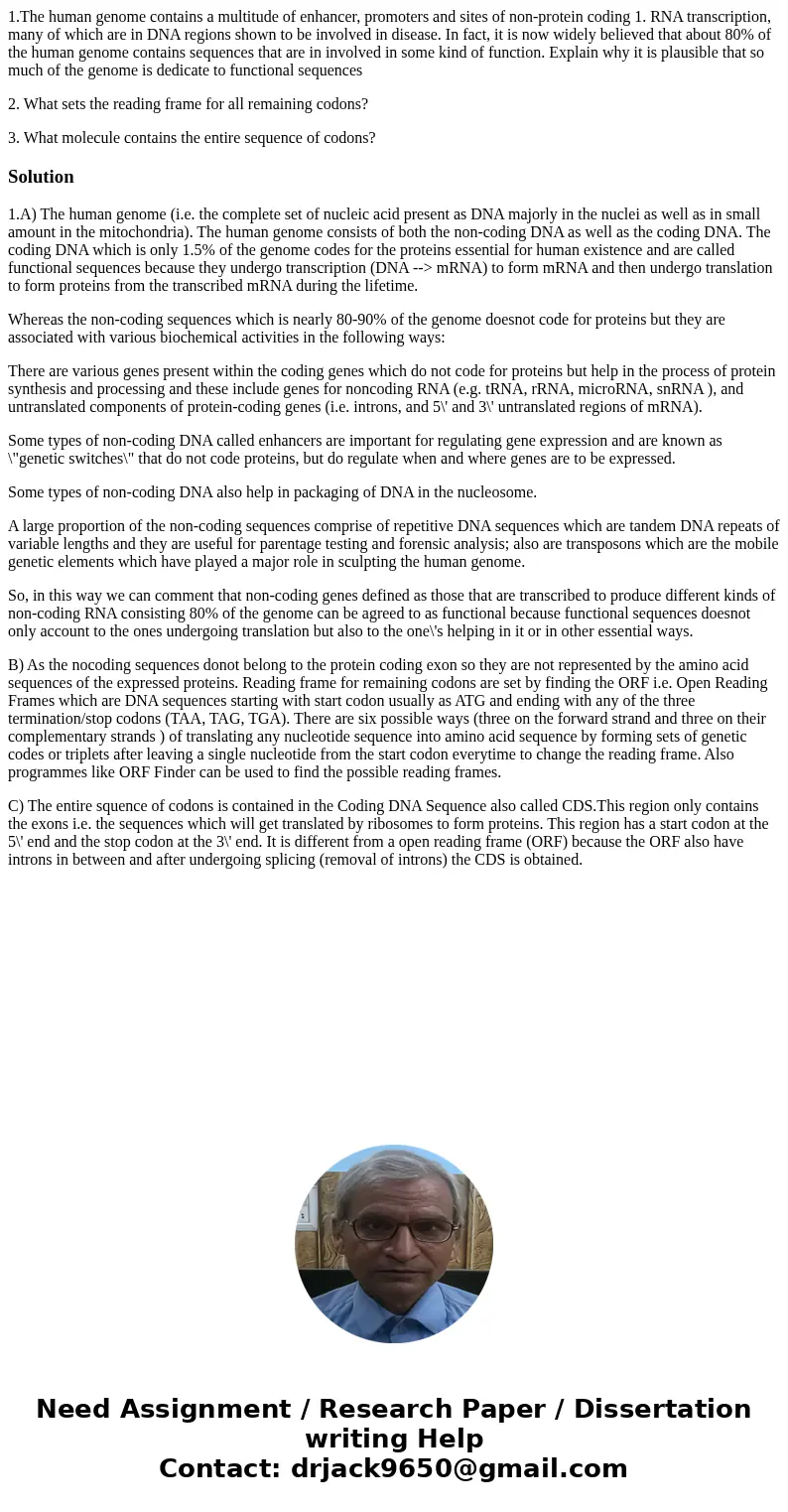1The human genome contains a multitude of enhancer promoters
1.The human genome contains a multitude of enhancer, promoters and sites of non-protein coding 1. RNA transcription, many of which are in DNA regions shown to be involved in disease. In fact, it is now widely believed that about 80% of the human genome contains sequences that are in involved in some kind of function. Explain why it is plausible that so much of the genome is dedicate to functional sequences
2. What sets the reading frame for all remaining codons?
3. What molecule contains the entire sequence of codons?
Solution
1.A) The human genome (i.e. the complete set of nucleic acid present as DNA majorly in the nuclei as well as in small amount in the mitochondria). The human genome consists of both the non-coding DNA as well as the coding DNA. The coding DNA which is only 1.5% of the genome codes for the proteins essential for human existence and are called functional sequences because they undergo transcription (DNA --> mRNA) to form mRNA and then undergo translation to form proteins from the transcribed mRNA during the lifetime.
Whereas the non-coding sequences which is nearly 80-90% of the genome doesnot code for proteins but they are associated with various biochemical activities in the following ways:
There are various genes present within the coding genes which do not code for proteins but help in the process of protein synthesis and processing and these include genes for noncoding RNA (e.g. tRNA, rRNA, microRNA, snRNA ), and untranslated components of protein-coding genes (i.e. introns, and 5\' and 3\' untranslated regions of mRNA).
Some types of non-coding DNA called enhancers are important for regulating gene expression and are known as \"genetic switches\" that do not code proteins, but do regulate when and where genes are to be expressed.
Some types of non-coding DNA also help in packaging of DNA in the nucleosome.
A large proportion of the non-coding sequences comprise of repetitive DNA sequences which are tandem DNA repeats of variable lengths and they are useful for parentage testing and forensic analysis; also are transposons which are the mobile genetic elements which have played a major role in sculpting the human genome.
So, in this way we can comment that non-coding genes defined as those that are transcribed to produce different kinds of non-coding RNA consisting 80% of the genome can be agreed to as functional because functional sequences doesnot only account to the ones undergoing translation but also to the one\'s helping in it or in other essential ways.
B) As the nocoding sequences donot belong to the protein coding exon so they are not represented by the amino acid sequences of the expressed proteins. Reading frame for remaining codons are set by finding the ORF i.e. Open Reading Frames which are DNA sequences starting with start codon usually as ATG and ending with any of the three termination/stop codons (TAA, TAG, TGA). There are six possible ways (three on the forward strand and three on their complementary strands ) of translating any nucleotide sequence into amino acid sequence by forming sets of genetic codes or triplets after leaving a single nucleotide from the start codon everytime to change the reading frame. Also programmes like ORF Finder can be used to find the possible reading frames.
C) The entire squence of codons is contained in the Coding DNA Sequence also called CDS.This region only contains the exons i.e. the sequences which will get translated by ribosomes to form proteins. This region has a start codon at the 5\' end and the stop codon at the 3\' end. It is different from a open reading frame (ORF) because the ORF also have introns in between and after undergoing splicing (removal of introns) the CDS is obtained.

 Homework Sourse
Homework Sourse